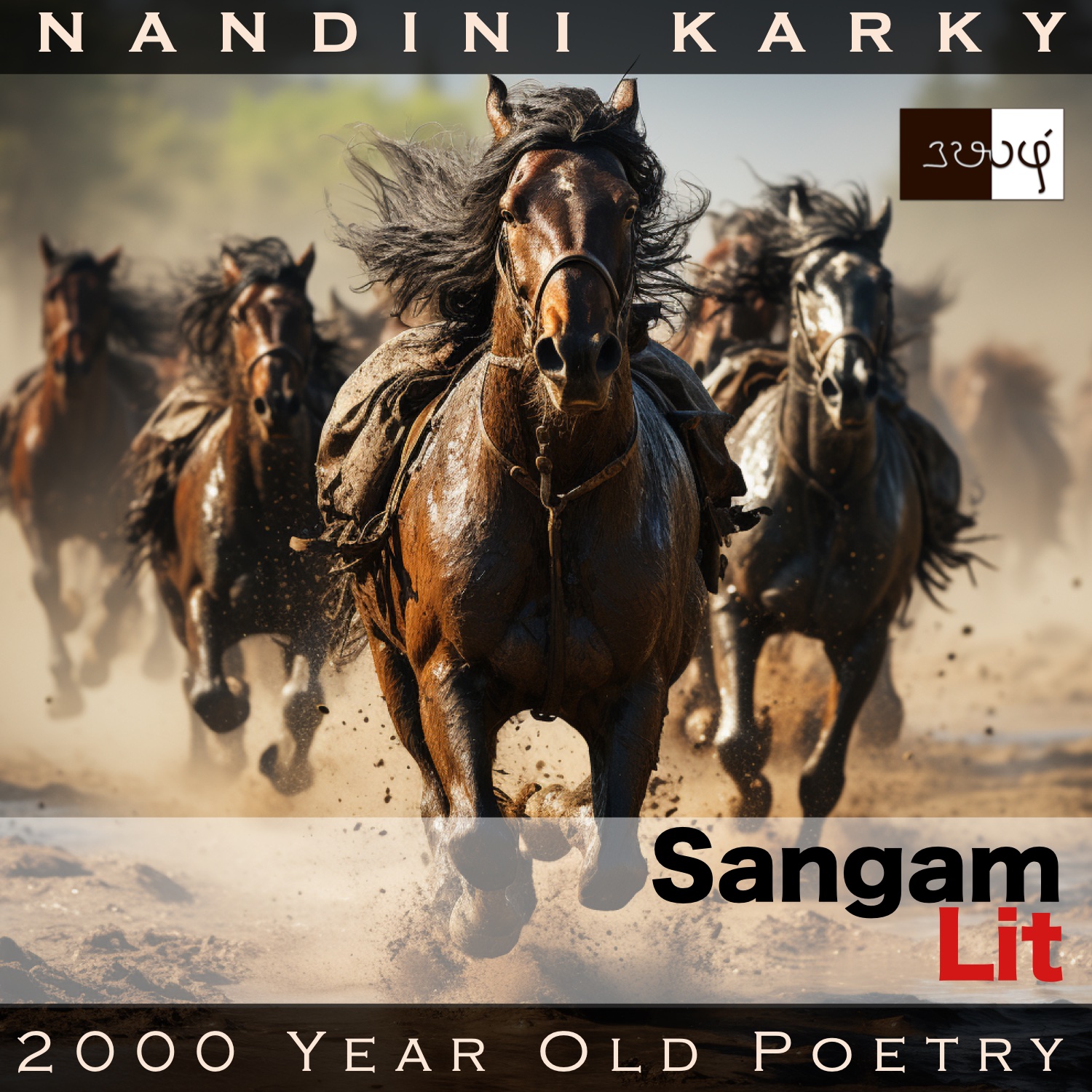Podcast: Play in new window | Download
Subscribe: Apple Podcasts | Spotify | Amazon Music | Android | iHeartRadio | Email | TuneIn | RSS | More
In this episode, we observe a clash of two armies, as depicted in Sangam Literary work, Puranaanooru 299, penned by the poet Pon Mudiyaar. Set in the category of ‘Nochchi Thinai’ or ‘Defence from within’, the verse contrasts the actions of the clashing forces.

பருத்தி வேலிச் சீறூர் மன்னன்
உழுத்து அதர் உண்ட ஓய் நடைப் புரவி,
கடல் மண்டு தோணியின், படை முகம் போழ
நெய்மிதி அருந்திய, கொய் சுவல் எருத்தின்,
தண்ணடை மன்னர், தாருடைப் புரவி,
அணங்குடை முருகன் கோட்டத்துக்
கலம் தொடா மகளிரின், இகந்து நின்றவ்வே.
If you listen carefully, you can hear the hoof beats of horses in this one! This female poet’s words can be translated as follows:
“Horses with a slow gait, belonging to the king from a small town, hedged by cotton bushes, had eaten just sprouted urad dal seeds. But akin to a ship’s front that pounces on the roaring waves of the sea, it split the vanguard of the enemy army. Those garlanded horses, belonging to the other king with huge, fertile, farming towns -the ones that had eaten ghee-mixed rich food and had trimmed manes -stood withdrawn and far behind, like the women who do not touch worship vessels at the temple of the fearsome God Murugan!”
Let’s leap in and learn more. The poet talks about horses belonging to a king of a minor town, one which is surrounded by bushes of the cotton plant and mentions these horses walk at a relaxed pace. As if she were a veterinarian, the poet details the diet of these horses, which we learn is sprouted urad dal seeds. While that sounds mighty healthy to us, in the poet’s tone, you can hear disapproval as if it were meagre and not the right food for these horses. While she disapproves the food, she is then stunned by the action of these same horses, which suddenly seem to have sprouted strength from nowhere and are now leaping on the enemy army and splitting and scattering them, like the front of a ship that sails, splitting the huge sea!
The poet then turns her attention to the horses of that enemy king, whose domain is not a small town but one filled with rich water resources. Again, the poet looks at the diet of these horses and says they have had yummy and rich food in the form of ghee-mixed rice. The horses are also described as fashionistas, who are trendy with their trim haircuts and are adorned with garlands as well. While everything looks great about these horses, what they are doing is something else, she adds, and concludes with a quirky simile, describing the behaviour of these horses in the battlefield to be exactly like that of women who are not supposed to touch the vessels in a temple, for they seem to be standing away and aloof from the fierce events of the field.
First, to shed some light about the simile involving women, the poet is actually talking about women experiencing menstruation and implying a belief that these women should not touch worshipping vessels in a temple and should stand far apart from the others during those days of the month. Though it may surprise some modern city dwellers, such practices are ongoing to this day, and even taken to an extreme, where a menstruating woman is asked to live in unhygienic outhouses and cannot cook or come near the other members of the household. Such isolating practices do not make sense in this time and era and impinge on the freedom and normalcy of young girls and women. Returning to the verse, the poet is in essence contrasting those horses from poor towns with a poor diet, putting on a rich show of power and courage, with those other horses from rich towns with a rich diet. Presenting the triumph of the weak over the strong, the verse is a kind of ‘David and Goliath’ story of horses in the battlefield!




Share your thoughts...